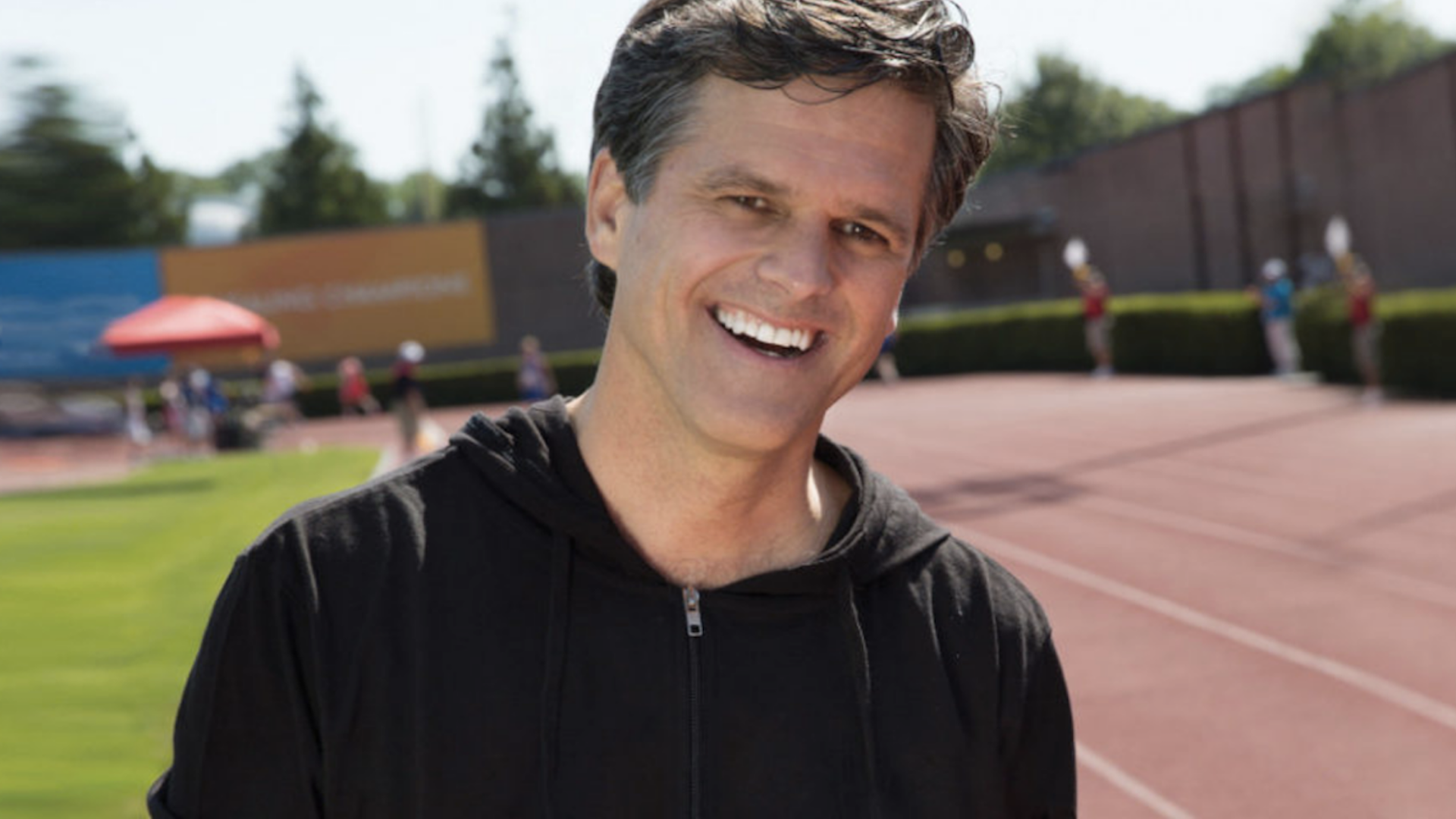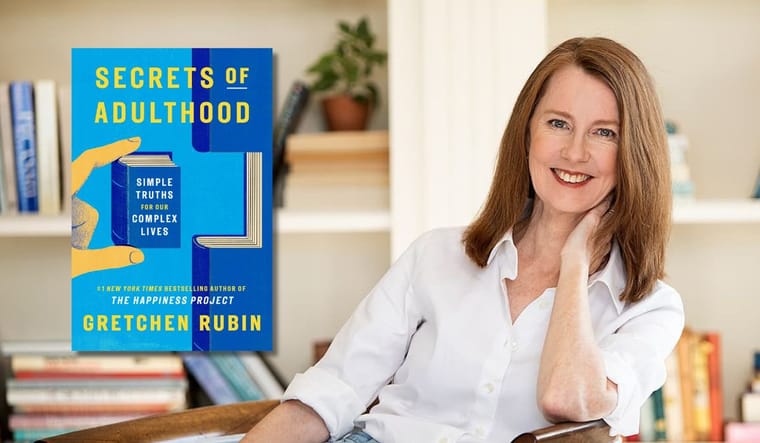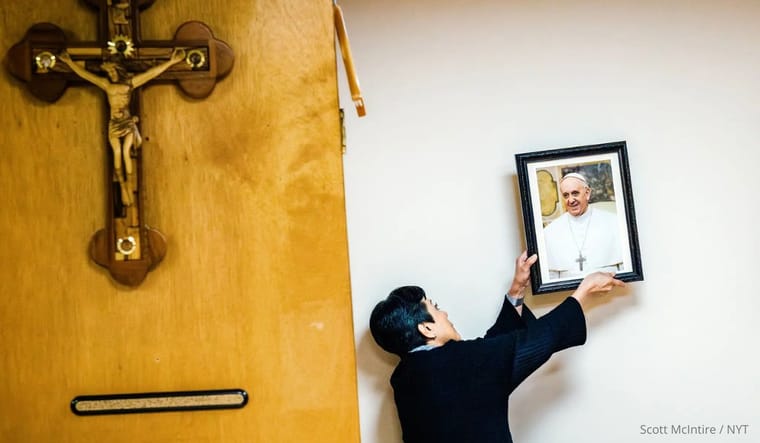It's Time to Change Our Culture of Bullying
Sometimes, middle school students have an insight into the world that combines their eager, childlike openness with their emerging adult critical eye—a capacity to “unveil.”
That’s what I found when talking to a group of such students in their school library in Des Moines, Iowa. We’d invited a small group to come together so I could ask them their views about what it will take to overcome divisiveness and othering. The 15 or so students who joined had no preparation—just an invitation to share their experiences and ideas in a safe space.
Students told of moments when they felt excluded or alone and shared strategies for managing themselves in such situations. One student said, “I like to go into my room or even my bathroom and just quiet down, relax, and find my real self. If I do that, I don’t feel so badly anymore.” Another student responded, “I know what you mean, but a lot of people can’t handle their real self.”
There was nervous laughter. I pressed her to explain.
“It’s just that a lot of people are fronting and pretending to be someone—adults too—because they can’t handle being alone or quiet. There’s just a lot of people who don’t want to know the real of what’s inside.”
Wow, I thought. This 13-year-old could be teaching with Richard Rohr or Barbara Holmes or Cynthia Bourgeault!
Another student tried to shift the direction of my questions.
“You keep asking us about name calling and cliques and all that in our school, Mr. Shriver, but the kids here and the teachers are really pretty good.” Another chimed in, “The teachers here—maybe not all of them, but most of the teachers—you can talk to them if you have a problem, and they care about you. If you reach out, you can find someone to help.”
Then the same student who spoke about the true self spoke up: “You know, I get what you’re asking, but I think you’re asking it wrong. You want to know about us, but the problem isn’t us. There really isn’t any bullying in our school. But you know what’s on the TV in my house all the time? News—and it’s all about hate and more hate and people trying to put each other down. And all I hear from adults out there is how much they hate and label and put other people down. We kids aren’t the bullies. Adults are bullies. You don’t need to ask us. You need to ask them: ‘What’s your problem?’”
The words took me aback—maybe even embarrassed me a little. I’d spent the better part of my life trying to help young people grow up to be socially and emotionally intelligent, compassionate, productive, and inclusive. I’d designed programs to promote empathy, problem solving, and inclusivity for students and schools. I’ve promoted mindfulness and other practices of self-awareness for children. But I had to ask myself, honestly: How could I have concluded that anyone other than adults are the real problem?
Sure, I’d always noted that our culture and our social structures were often biased, unjust, and downright cruel. But I’d always gambled that if we could help kids be different, they would make the necessary changes. But here was a 13-year-old girl from the heartland of our country telling me, in effect, that in our culture, adults can’t handle their own truth and it makes them into bullies.
An unveiling was underway.
Over the next few weeks, I started to reach out to people in media and politics, to people in education and public safety, to people in the arts and business. I gathered a small team and we read neuroscientists, spiritual masters, anthropologists, historians, and poets.
We found no evidence to contradict this wise student. Adults have indeed been swept into a culture of bullying—bullying online, bullying in the media, bullying in politics, bullying in business, bullying even in families. How, we wondered, had we all become complicit in creating a culture of bullying?
The data we found led us back to the insight of our student in Iowa. We’re living in an epidemic of loneliness (almost half of us are lonely), an epidemic of racism (no data needed; it’s obvious), and the highest rates ever recorded of addiction, suicide, and division. Belief in institutions of all kinds is plummeting and, in its place, overwhelming anxiety is our new normal. Who could argue with the unveiling of our young sage? There’s something about reality that we can’t handle right now.
All this points to an unmistakable hole in the soul of our collective lives: We are an alienated people—a country whose citizens are divorced at once from one another, from their own selves, and from a sense of meaning, in the world as it is and in the hope of the world to come. “Our greatest grief,” Roshi Joan Halifax, the Zen teacher, writer, and activist, said to me, “is that we’re grieving the loss of hope.” Reality devoid of ultimate meaning and purpose is terrifying, and millions of us can’t handle it. Bullying may well be its most obvious manifestation.
Our task is no less than to build a new culture: a culture of ultimate meaning, individual purpose, and shared belonging, but without falling into the traps that Fr. Richard Rohr calls “unstable correctness (liberals) and stable illusion (conservatives).” More precisely, our challenge is to create institutions capable of drawing on our empirically verifiable (not dogmatically given) spiritual energy and overcoming our empirically verifiable tendency toward demonization or superiority over others.
Some will say this is idealistic—maybe even naïve. But at a speech I attended many years ago, the late great Archbishop Desmond Tutu (1931–2021) was asked, “Don’t you have to concede that evil is more powerful than good?” Tutu burst forth with his inimitable smile and replied, “No! Evil is not more powerful than good, but evil is better organized!”
So, our challenge is nothing less than to organize for good around the principles necessary to build a new culture. While this challenge is enormous, new mindsets and patterns grounded in spiritual realism are already emerging, but often go unnoticed or overlooked. These new mindsets are oriented toward the good, the true, the beautiful, and the loving. They are oriented toward a collective hope, a courageous faith, and a free and harmonious polity. They unite people rather than divide them.
I see these new mindsets and patterns as a necessary and urgent possibility—a wholly new kind of applied spiritual realism that complements our individual freedoms and our scientific explorations with the work of nurturing shared goodness, beauty, truth, and love. These mindsets are capable of overcoming fear, anxiety, and despair in our national life.
1. We must believe in the givenness of human dignity. Despite all the evidence to the contrary, everyone is sacred and deserves to be treated with dignity—no exceptions. Think of the statement attributed to Albert Einstein, that you can live either as if nothing is a miracle or as if everything is a miracle. There is beauty and the miraculous in everything.
2. We must practice silence, presence, self-awareness, and nonjudgement. Known to all religious traditions and meditation practices, silence nurtures inner experience and awakens deeper types of consciousness that invite us to remove distractions, deceptions, reactive tendencies, and self-promoting patterns of thought in order to reveal a deeper connection to reality and a deeper trust in being itself. Blaise Pascal, the French philosopher and mystic, said centuries ago, “All of humanity’s problems stem from [our] inability to sit quietly in a room alone.” To nurture this ability will be central to the recovery of meaning, purpose, and belonging.
3. We must cross boundaries and build relationships of dignity. Both personal and collective flourishing will increasingly depend on our capacity to create institutions that encourage and promote ways of crossing boundaries of identity, background, and experience. To know and believe in the dignity of all is one thing; to create the safety and purpose that comes from being a part of a “tribe” without othering and humiliating others’ tribes is another. To stand firmly with conviction and listen deeply with compassion—that is the precise quality of heart and mind necessary to identify transformative solutions to the challenges of our time.
4. We must be of service to the good, the true, and the beautiful. “Purpose driven” lives, institutions, and organizations will articulate their reason for being in terms that advance a goal that leads to greater justice and joy for all. Even competitive institutions will increasingly require a purpose larger than the defeat of the other or the material advancement of the participants. Increasingly, these articulations of purpose will depend on internal structures of power that affirm the value of all rather than the control of few.
5. We must stand in solidarity with those who’ve been marginalized. The wisdom and insights necessary to create a world of spiritually realistic individuals and institutions will invariably come in large part from those who have been victims of marginalization and those experiencing suffering. The future, therefore, will depend on the extent to which circles of belonging are routinely opened to those who have been excluded and to the voices of those in pain, not only to allow them to find belonging, but also to allow them to change the circle itself so it no longer excludes people or pain.
History is full of individuals who operated outside the boundaries of enlightenment thinking and inspired generations. Think of Abraham Lincoln’s “malice toward none,” words spoken in the midst of the most divisive and bloody conflict in American history. Think of Dr. Martin Luther King Jr.’s exhortation to create the “beloved community” despite brutal oppression. Think of Archbishop Desmond Tutu’s worldview grounded in the African concept of ubuntu, which is loosely translated as “I am because we are.”
Consider the moral courage of Jane Addams, the mystical consciousness of Thomas Merton, the nature-infused spirituality of Mary Oliver, and the unbridled resilience of Sojourner Truth. Each of them embodies a different story, a unique lens on meaning and purpose, and all of them reveal the marks of a mindset not trapped in narrow individualism or despair, but instead imbued with a belief in universal dignity, the moral courage to cross boundaries of exclusion and hostility, the practices of both justice and joy, and the capacity to see beyond the narrow interests of any given conflict to discover the transcendent possibility of change.
The formerly incarcerated writer Lawrence Bartley wrote, “we are all in a form of solitary confinement.” My young middle schooler in Iowa unveiled basically the same thing: Reality right now is unbearable, and our way of thinking is breaking us apart.
For me, the goal seems clear, even as the path is uncertain. We are challenged—even called—to make love a credible and realistic principle on which to organize our common life. There is no substitute—no economic value, no health outcome, no political power, no collective achievement—that approximates the grace and transformation of love received and love given. We can’t get to justice or joy except with love. There is no other path.
“How to Change Our Culture of Bullying” is excerpted from “Of Bullies and Possibilities” by Timothy Shriver, in Oneing, vol 10, no 1, “Unveiled,” copyright Center for Action and Contemplation. All rights reserved worldwide. Used with permission.
Please note that we may receive affiliate commissions from the sales of linked products.



